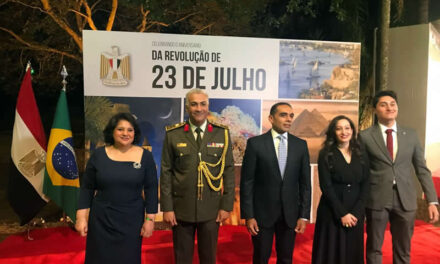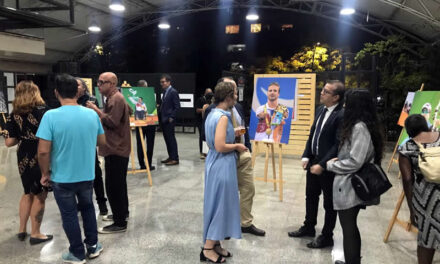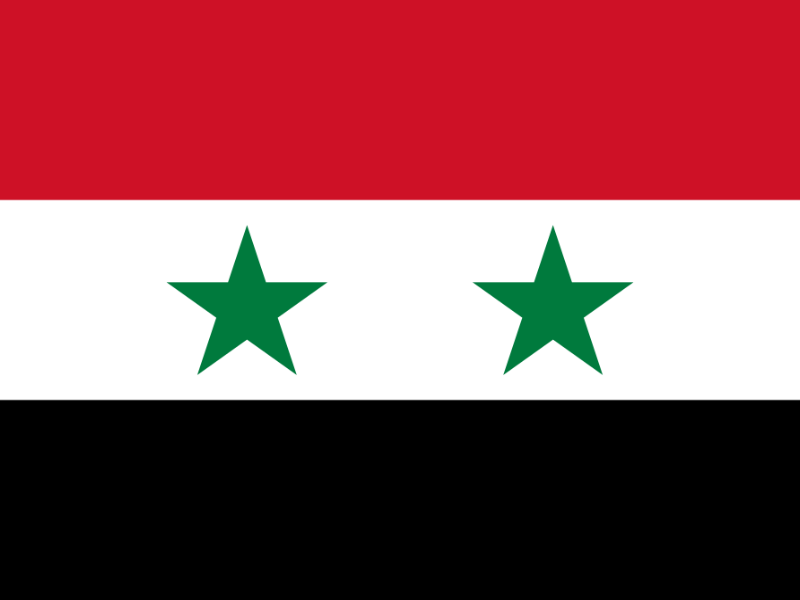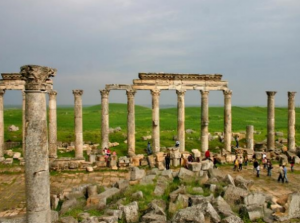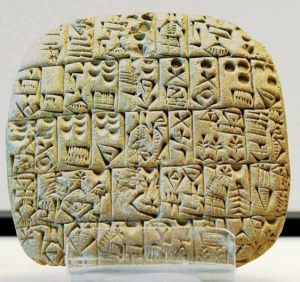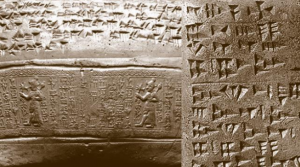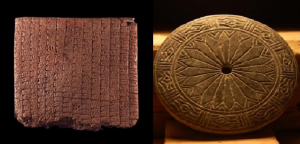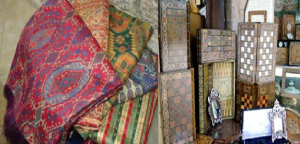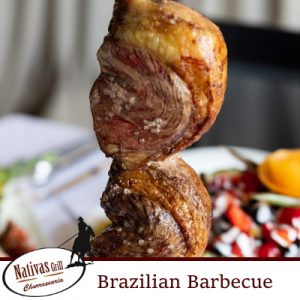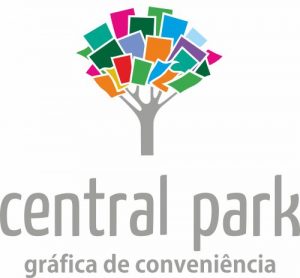Syria
History and Culture
“You are in Syria.
You are, then, where history has a voice and where soil has the scent of civilizations. In Syria the
memories of perseverance and human innovations meet: Mary, Ebla,Ugarit Kadesh, Amrit,
Apamea , Dura Oorobos, Palmyra, Bosra, Shahba, Rusafa … In addition to all brilliant names :
Damascus, Aleppo, Hama.
The most marvelous greatest civilizations were born and interacted on the Syrian land, and
human achievements that benefit humanity until today.
The story of agriculture first began in Syria thousands of years ago. Stability and attachment to
the land started and the man started building houses to shelter in instead of caves. He began a
journey of self- discovery .He conversed with the sky and mumbled the earliest hymns.
This far period from human life and its remnants are still scattering in more than one place in
Syria: in Amartibt, where the Euphrates Dam is located today, in Yabroud and on the banks of
rivers.
Here in Syria, where man contributed to humanity with a great civilized achievement as he
discovered copper and invented bronze.
This metal civilization originated on the banks of khabour in (Tell Halaf). Before that, there was
the invention of clay and making it into ceramic and decorations. Since the third millennium B.C
achievements and creations have been successive: In the kingdom of (Mari) on the Euphrates
there were castles, drawings and remarkable commercial and cultural flourishing.
The Kingdom of (Ugarit) on the Syrian coast presented humanity with its miraculous invention:
the first alphabet in the world.
While in the Kingdom of (Ebla), one of the greatest documentary library was discovered, in its
royal palace, that organize matters related to administration, Commerce, diplomatic ,
industry affairs and war- peace relations with other kingdoms. Ebla influence expanded from the
North of Anatolian Mountains to Sinai in the south.
Kingdom of (Akkad) in the east was well known with two important industries: the Syrian silk
textiles decorated with golden threads, and the wood engraved and inlaid with ivory and shells.
Syria, after more than three thousand years and until today, is still known for these two industries:
Syrian silk Brocade with unique golden threads is one of a kind in the world and the Syrian wooden
mosaic inlaid with ivory and shells is the most beautiful gift for people everywhere.
On the Syrian land Civilizations, innovations were successive as well human immigrations to Syria
coming from the north – from Anatolian mountains or the sea- with greed in its wealth and
unique strategic position. It was a meeting point for the ancient world. In spite of all these military
and human crawling , it didn’t change the temper of the original inhabitants who came
consequently since the first centuries from the south of the Arabian Peninsula and settled there,
from the far east of the island and Mesopotamia to the south of Palestine and the land of Sinai,
and they were known once as Akkadians and once as Amorits (third millennium BC) And some
times as Canaanites and Phoenicians (Coastal residents) And sometimes the Arameans (the
inhabitant of the upper areas) and other times Ghassanin and Anabateans ( the Last migrations).
These successive migrations preserved the Arabian style of the Syrian people since the dawn of
history. Therefore they were able to stand up to all human migrations which invaded Syria such
as Hittet, Persian, Greece and Roman.
When the Arabian Islamic conquest arrived in (626) it asserted the Syrian Arabic identity, stood
up in the face of invasion against the Syrian lands and restored essence and authenticity to the
land.
Syria is always described as (a summary of the of the world history). Major civilizations interacted
on its land. Knowledge, innovations, human gender increasing, discoveries and religions emerged
in Syria. Its land, has been but a real accumulation of these epics for more than eight thousands
years.
Since the third millennium BC, Syria linked between Mesopotamia and the Nile valley. Since the
first millennium BC Syria constituted a link between the Mediterranean world and the Far East.
This unique location gave it a strategic rank and considering it as a meeting- point of three
continents (Asia, Africa, and Europe) and a cross-point for international roads. The Silk Road that
came from China passed through its land. Its first Syrian destination was Dura Oorobs (Alsalhia)
Then Palmyra and Homs until it reaches the Mediterranean Sea ports.
Syrian land was the most bright and tender center in Greek and Roman eras. Most of the Roman
emperors were Syrians from Homs and Shehba. The Phoenician language emerged from Syria
and remained the language of commerce and diplomacy in the ancient world for a long time. Islam
and Christianity firstly emerged from its land and it is connected with its memories, traditions and
divines. Christian society started in Antakya in the first century. Messenger Bolus started his
journey of faith from Damascus and its straight road. Jesus Christ language is still spoken in Ma’
lula and in Gab ‘adain.
While the Islamic and Arabic civilization started spreading its lights, Syria became its beating heart
and its bright main center after Damascus became the capital of the flourished Umayyad state.
Up till now Syria still preserves its original type in the language of its people, its life- style and
ideology.
After all that no wonder that every human all over world is in debited with his ideas, art and
accomplishments to this native land where the human civilizations were brought up and must feel
as belonged to Syria as to his own homeland. It is truly said that every person in the world has
two countries: his original homeland and Syria.”
Portuguese:
Síria
História e Cultura
“Você está na Síria!
Você está, então, onde a história tem voz e onde o solo tem o cheiro das civilizações. Na
Síria, as memórias de perseverança e inovações humanas se encontram: Maria, Ebla,
Ugarit Kadesh, Amrit, Apamea, Dura Oorobos, Palmyra, Bosra, Shahba, Rusafa … Além
de nomes célebres como Damasco, Aleppo, Hama.
As maiores e mais maravilhosas civilizações nasceram e interagiram nas terras da Síria,
além das muitas conquistas humanas que beneficiam a humanidade até hoje.
A história da agricultura começou na Síria há milhares de anos. Iniciou-se estabilidade e
o apego à terra e o homem começou a construir casas para se abrigar em vez de cavernas.
Iniciou-se, então, uma jornada de autodescoberta, onde o homem conversava com o céu
e murmurava seus primeiros hinos.
Esse período distante da vida humana e seus vestígios ainda estão espalhados em mais de
um lugar na Síria: em Amartibt, onde hoje está localizada a barragem do Eufrates, em
Yabroud e nas margens dos rios.
Na Síria, o homem contribuiu para a humanidade com uma grande conquista civilizada
ao descobrir o cobre e criar o bronze.
Esta civilização de metal originou-se nas margens do Khabour em Tell Halaf. Antes disso,
houve a invenção da argila e sua transformação em cerâmica e decoração. Desde o
terceiro milênio a.C., realizações e criações têm sido sucessivas: No reino de Mari, no
Eufrates, havia castelos, desenhos e notável prosperidade comercial e cultural.
O Reino de Ugarit, na costa síria, presenteou a humanidade com sua invenção milagrosa:
O primeiro alfabeto do mundo.
Ainda no Reino de Ebla, foi descoberta uma das maiores bibliotecas documentais, em seu
palácio real, que organiza assuntos relacionados à administração, comércio, diplomacia,
negócios da indústria e relações de guerra-paz com outros reinos. A influência Ebla se
expandiu do norte das montanhas da Anatólia até o Sinai, no sul.
O reino de Akkad, no leste, era bem conhecido por duas indústrias importantes: os têxteis
de seda síria decorados com fios de ouro e a madeira gravada e incrustada com marfim e
conchas.
A Síria, depois de mais de três mil anos e até hoje, ainda é conhecida por estas duas
indústrias:
O brocado de seda sírio com fios dourados exclusivos é único no mundo e o mosaico de
madeira sírio incrustado com marfim e conchas é o presente mais bonito para pessoas em
todos os lugares.
Nas civilizações que ocuparam as terras sírias, as inovações foram sucessivas, bem como
as imigrações humanas para a Síria, vindas do norte, das montanhas da Anatólia ou do
mar, em busca de riqueza e posição estratégica única. Foi um ponto de encontro para o
mundo antigo. Apesar de todo esse avanço militar e humano, isso não mudou o
temperamento dos habitantes originais que, por sua vez, vieram, desde os primeiros
séculos, do sul da Península Arábica e se estabeleceram lá, desde o extremo leste da ilha
e da Mesopotâmia até o sul da Palestina e da terra do Sinai. Eles eram conhecidos, por
vezes como acadianos e outras como amorreus (terceiro milênio a.C.). E algumas vezes
como cananeus e fenícios (residentes do litoral) e em outras como arameus (os habitantes
de áreas superiores) ou Ghassanin e Anabateans (as últimas migrações). Essas migrações
sucessivas preservaram o estilo árabe do povo sírio desde o início da história. Portanto,
eles foram capazes de enfrentar todas as migrações humanas que invadiram a Síria, como
as migrações Hittet, Persa, Grega e Romana.
Quando a conquista árabe islâmica chegou em 626, afirmou-se a identidade árabe síria,
levantou-se diante da invasão das terras sírias e restaurou a essência e a autenticidade da
terra.
A Síria é sempre descrita como um resumo da história mundial. As principais civilizações
interagiram em suas terras. Conhecimento, inovações, aumento da espécie humana,
descobertas e religiões surgiram na Síria. Sua terra tem sido apenas um acúmulo real
dessas epopeias por mais de oito mil anos.
Desde o terceiro milênio a.C., a Síria ligava a Mesopotâmia ao vale do Nilo. Mas desde
o primeiro milênio a.C., a Síria constituiu um elo entre o mundo mediterrâneo e o Extremo
Oriente.
Esta localização ímpar confere-lhe uma posição estratégica e é considerada um ponto de
encontro entre três continentes: Ásia, África e Europa e ponto de cruzamento de estradas
internacionais. A Rota da Seda, que veio da China, passou por suas terras. Seu primeiro
destino na Síria foi Dura Oorobs (Alsalhia), depois Palmyra e Homs até chegar aos portos
do Mar Mediterrâneo.
A terra síria era o centro palpitante e terno das eras grega e romana. A maioria dos
imperadores romanos eram sírios de Homs e Shehba. A língua fenícia surgiu da Síria e
permaneceu por muito tempo como a língua do comércio e da diplomacia no mundo
antigo. O Islã e o Cristianismo surgiram primeiro nas suas terras e estão conectados com
suas memórias, tradições e teologia. A sociedade cristã começou em Antakya, no primeiro
século. O Mensageiro Boulus (Paulo) começou sua jornada de fé em Damasco, na via
reta. A língua de Jesus Cristo ainda é falada em Maalula e em Gabaadain.
Enquanto as civilizações islâmica e árabe começaram a espalhar sua iluminação, a Síria
se tornou seu coração pulsante e seu centro principal e palpitante, depois que Damasco se
tornou a capital do florescente Estado Omíada. Até hoje, a Síria ainda preserva seu modo
original, na língua de seu povo, seu estilo de vida e ideologia.
Depois de tudo isso, não é de se admirar que cada ser humano, em todo o mundo, esteja
em débito com suas ideias, a arte e as conquistas desta terra natal, onde as civilizações
humanas foram criadas e sentem o pertencimento à Síria como à sua própria pátria. A
verdade é que cada pessoa no mundo tem duas pátrias: Sua pátria original e a Síria.”
THE GUIDE informs:
We highly recommend Dr. Tamara Passos as a doctor specialized in Family Medicine and able to provide assistance to members of the diplomatic corps in Brasilia, in the English, Spanish, and Portuguese languages.
With over 15 years’ experience, Dr. Passos can attend to you and your family in the comfort of your home.
Visit https://theguide.com.br/services/doctor-tamara-passos/ and learn more about family medicine and the experience of Dr. Tamara Passos.
Dr. TAMARA PASSOS
(CRM-DF 20.174)
Phone and WhatsApp: (61) 99832-4782
The diplomatic corps publications in this page are free of charge.
We kindly request the members of the diplomatic corps to send the texts in English and Portuguese, in Word format, to the email: pedro@theguide.com.br. You can also send an image in jpeg format related to the text.


